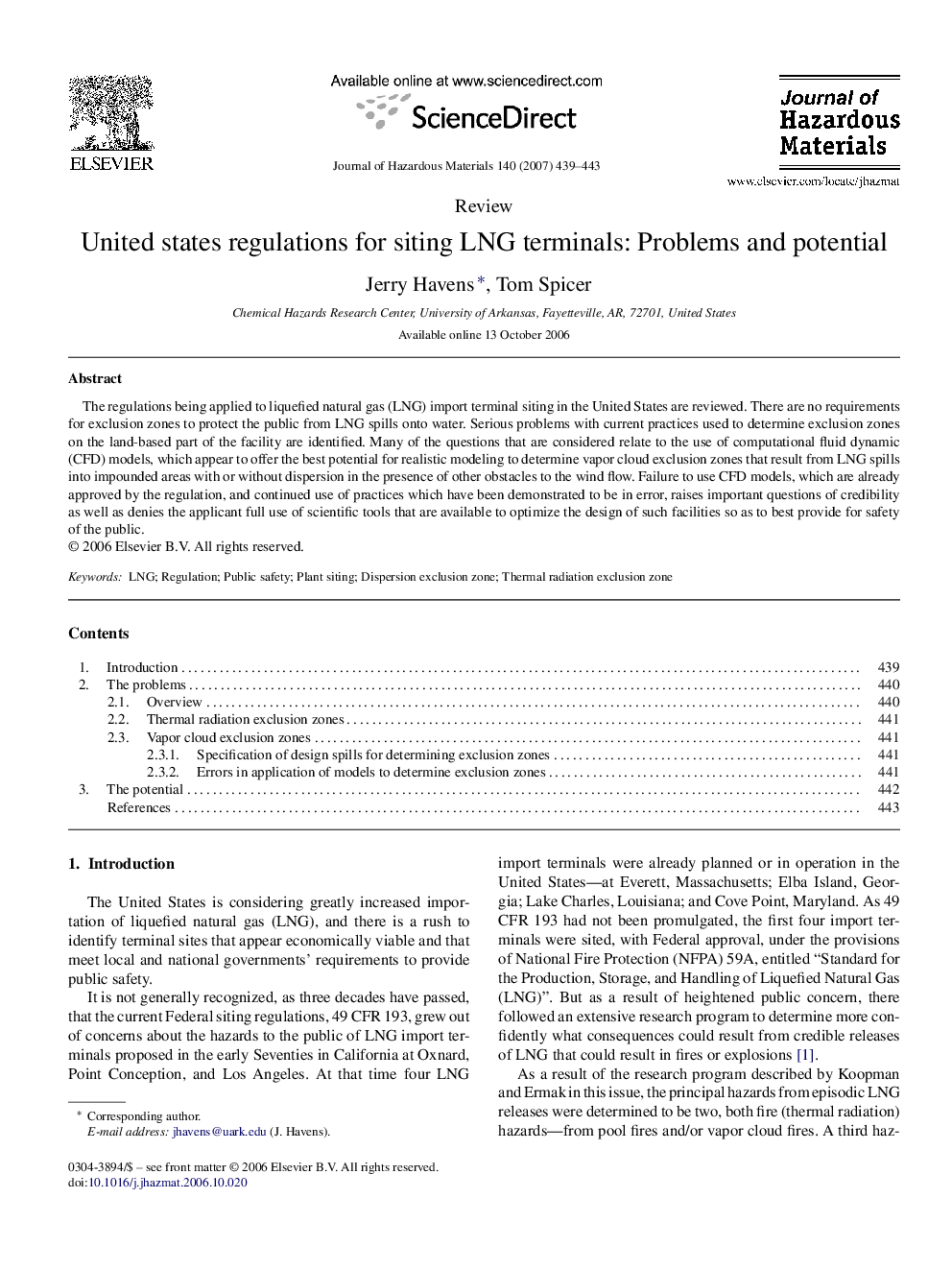| Article ID | Journal | Published Year | Pages | File Type |
|---|---|---|---|---|
| 585039 | Journal of Hazardous Materials | 2007 | 5 Pages |
Abstract
The regulations being applied to liquefied natural gas (LNG) import terminal siting in the United States are reviewed. There are no requirements for exclusion zones to protect the public from LNG spills onto water. Serious problems with current practices used to determine exclusion zones on the land-based part of the facility are identified. Many of the questions that are considered relate to the use of computational fluid dynamic (CFD) models, which appear to offer the best potential for realistic modeling to determine vapor cloud exclusion zones that result from LNG spills into impounded areas with or without dispersion in the presence of other obstacles to the wind flow. Failure to use CFD models, which are already approved by the regulation, and continued use of practices which have been demonstrated to be in error, raises important questions of credibility as well as denies the applicant full use of scientific tools that are available to optimize the design of such facilities so as to best provide for safety of the public.
Keywords
Related Topics
Physical Sciences and Engineering
Chemical Engineering
Chemical Health and Safety
Authors
Jerry Havens, Tom Spicer,
